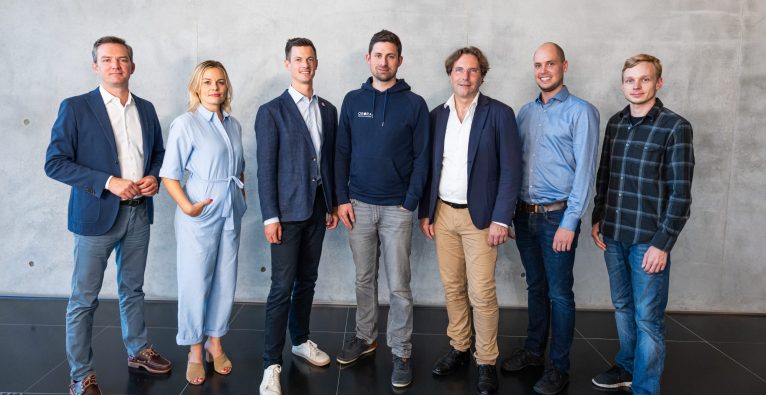✨ AI Kontextualisierung
Cathy specialises in communication for startups and organisations supporting them. Before launching her pr-agency CEW Communications, Cathy was Head of Communications for Tech City UK and previously Communications Manager for Seedcamp. She is the director of GeekGirl Meetup UK and host of #GeekGirlMeets. We talked to Cathy about how startups do communication right.
+++ Cathy White: Der Artikel zum Interview +++
What’s the best way for a scientist who has never before thought about commercializing to begin to understand his target group or his customer?
Cathy White: The best way to understand your customer is you talk to him. Very very simple, but not enough people actually spend enough time doing this. So, at a very beginning you will have an assumption about your market. You will have assumptions about your customer. And you’ll need to get in front of them in order to actually figure out if these assumptions are all corrector not. So, the best think you can do is sit down, ideally face to face, with a customer, try and meet as many as possible.
Ask open ended questions. So, don’t go in and ask questions that only can be responded to with yes or no. What you need is to create questions which allow something to respond for as long as they think is necessary. You need to get as much information out of them as possible. You are not just testing your assumptions, you are learning new things. And one of the most critical things you are doing in this process is you want understanding the language of your customer. If you are coming from a scientific background, it’s more than likely that you will have a much more technical language or way of explaining things. So, if you get your customer to explain things to you in a way that they feel most comfortable, you’ll be able to take that language and apply that when you do your sales and marketing in the future. You need to be able to talk like your customer does.
What is the best stage to start your pr work?
Cathy White: Right from the very beginning. There is no stage more critical than when you’re in the beginning of building a company or an idea. So, everyone has a dream. You have a dream of a business that you want to create or a product. You think you have recognised the problem and you think you have the solution. But before that dream goes any further, you need to talk to a customer. Because if you don’t do it from the very beginning, there is a high chance that your dream becomes a nightmare. So, the majority of businesses will fail in the first 18 months. It’s because someone has not spend long enough talking to a customer or they are not able to explain what they do in a clear and easily persuading way. So, the best thing you can do at the beginning is start talking to your customers and then always be talking to your customers. So when you have got a product, you have got a service, you have something you can show them, get it in front of them and you’ll learn hell of a way more of what they need and the way you wish they interact with your product or service. And that just means you keep getting better and better.
So, you developed your product, you talked to your customer. How do you approach the selling of your product?
Cathy White: When you talk to your customer, one of the questions you need to weave in is what media, what channels are you consuming on a day to day basis. So, everyone has different habits, right, there are some people, like me, how are obsessed with twitter. So, we’ll be always checking twitter. That’s where I get the majority of my news, I get an idea of what’s happening in my industry, in multiple different industries and I interact with various people. For others it might be that twitter is not the right channel, but LinkedIn is a strong one or it might be that there are particular newspapers or trade publications that that person checks on a day to day basis. So by asking someone what media they are consuming or what offline or online channels they use the most, you will be able to plot out a very topline marketing plan. You need to go to the channels your customer is using. And at the very beginning you are playing on the awareness side of things, so the top end of your sales funnel. You grow awareness of your brand, of your product or service you are offering. And you need to do that initially using the most cost-effective channels because it’s highly likely you don’t have much money to burn. But if you put the investment in, you should get a return in that. So think about using direct email, asking favours, asking for connections, where can you create a platform for yourself. Can you set yourself up, your company up on multiple different social channels? Can you get in front of journalists? Be a bit open to trying various new different things. There is no one-size-fits-all when it comes to marketing. It is a test and learn exercise, just like everything else.
What do you think are the biggest differences between a business and a consumer target group?
Cathy White: Consumer target group is impulse-driven. So, if you are any consumer, we are consistently surrounded by things that want to be sold to us. So, whether it’s just seeing an advert on the TV or opening up Facebook or going into a shop – we are consistently combated with things that we are meant to want to buy. And it all comes down to impulse. When we are purchasing something, we are driven by emotion and that emotion we invalidate with logic. We don’t buy anything for a logical purpose first, there is always an emotion behind it. So for a consumer it’s very much about giving them an idea or a picture of what life would be like if they had your product or your service. What would that enable you to achieve as an individual. And it’s all tied to their goals and ambitions and their personal wants or desires. So, you do that and then hope that they will come back and be like: Logically I should have this thing.
With the consumer we need to be visible in at least seven different touchpoints in order to sell to that consumer. From a B2B point of view the difference is that we are working on a hell of a lot longer sale cycle. For businesses – they are driven by three different things: There is business goals, there is decision criteria and then there are personal goals as well. Because everyone who is actively making his decisions within a business still has personal goals and personal ambitions and they are hoping whatever decision they make, will lead to something in return to them and their carrier. So, with businesses it’s all about relationship building. You’ll need to constantly get in front if people whether that’s face-to-face, on the phone, via email, and it will take quite a time to convert. The big thing with businesses is that ultimately every business is aware of a problem that they have. They have blockers that are going to stop them from being as successful as they want to be. They also have an idea of what they can do in order to fix that problem. And the key-thing is to make sure that when you talk to businesses you aren’t asking them about a solution they think they have already found. You want them to start talking about the problem that they’ve got and the needs that they have. And then prove that your solution is better than anything they’ve already considered.
How can you use the art of storytelling to communicate to your corporate?
Cathy White: Basically, if you can’t communicate what your company does in a story, you’re screwed – that is a really really bad thing. Storytelling is something that humanity has done for tens of thousands of years. It’s not anything new and we do stories on a day to day basis and we don’t necessarily realise that what we are saying is actually a story. So, one of the tests that I kind of refer to companies is: Imagine you are set in a bar or you are set in a pub and you are having a beer with someone. And that someone is not like you. They are not enough of a scientist, they are not a technical person, but you are having a conversation. How do you explain what you do to that person over a point? And in order to get that person to pay attention, you will need to pull in analogies, you may have to use metaphors, you have to put things in a colorful way. Ultimately what you are creating bit by bit is a story. There are other ways in which we phrase this right. It’s not uncommon in the tech-world to refer to the “mum test”. Can you explain what you do to your mother? I would replace this with: Can you explain what you do to a 5-year-old or a 10-year-old? How do you make a person that young with unlimited awareness of language understand what it is that you do? And ultimately all comes down to storytelling. So, we don’t launch in to something by explaining what our product or our service does – we get someone to think about the problem that they have or a way in which their life could be different. And then we provide the prove and the pitch. And the pitch is where you can talk about what you do. Ultimately the best way to test this, is just start writing down what you think your story or stories could be and just keep practicing because your story will always change.
If you are talking to potential partners or investors – what would be your three tips for a good pitch?
Cathy White: So, the big thing – and I think not enough people put enough attention in this as they should – for someone’s pitch to be memorable, you have to make an impression to the people you are pitching to. And the impression is going to be led by the way which you present. So, it comes down to how you hold yourself, how you talk, the way in which you engage them through your body language. Even focusing on that can make a big difference. Because if you can make sure you got someone’s attention, then he will be listening to everything you else that you say.
The other key-thing is to make sure that you are as informative and yet concise you need to be. So, investors wanna hold different amounts of information – huge amount of different information. The key-thing is that they need to know that you’ve got a smart idea, you’ve got a smart team and that there is a big market potential. If they are going to invest a hundred of thousand euro into your business, they want to know that they are going to make at least ten-x in return. So, making sure that you have covered all those key things, and then the final thing is just to make sure you are consistently providing prove for what you are doing. So, you need to validate various different things in your pitch. You need to validate yourself, you need to show why you or your team, is the team to do and lead this project. You need to validate the market which you are operating in. And you need to validate your ideas. And that validation – it may be that you are a while way from having a product, and you are getting users, and even just having an indication from potential customers that your solution is something that they might use – that validation is something that you can put in front of investors.





